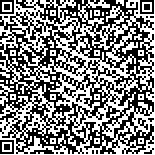| 引用本文: | 王小静,刘洪娜,任艺君,武鸿达,张颖,刘季花,李力.海洋沉积物孔隙水中痕量金属元素的测试分析方法.海洋与湖沼,2022,53(5):1079-1088. |
| |
|
| |
|
|
| 本文已被:浏览 1086次 下载 957次 |

码上扫一扫! |
|
|
| 海洋沉积物孔隙水中痕量金属元素的测试分析方法 |
|
王小静1,2, 刘洪娜1, 任艺君1, 武鸿达1, 张颖1,2, 刘季花1,2,3, 李力1,2,3
|
|
1.自然资源部第一海洋研究所 山东青岛 266061;2.自然资源部海洋地质与成矿作用重点实验室 山东青岛 266061;3.青岛海洋科学与技术试点国家实验室海洋地质过程与环境功能实验室 山东青岛 266061
|
|
| 摘要: |
| 孔隙水是沉积物-海水界面链接沉积物颗粒和上覆水体的一个重要过渡相态,针对其研究可更好地了解痕量金属在固-液界面的早期成岩过程。近年来,针对孔隙水中痕量元素研究的方法较为匮乏,为此建立了一种分析测定海洋沉积物孔隙水中7种痕量金属元素(Mn、Cu、Zn、Ni、Cd、Co、Pb)的方法,该方法使用Nobias PA1树脂进行富集分离,再使用电感耦合等离子体质谱(ICP-MS)进行测试,可针对孔隙水中的痕量金属元素进行准确分析。通过实验结果发现该方法最优实验条件为: Nobias PA1树脂富集时的pH值为5.5~6.0,洗脱酸浓度为1.3 mol/L硝酸,体积为1 mL。同时,样品需进行紫外消解4 h以上以分解有机络合物,该消解步骤对Cu和Co这两种元素尤其重要。该方法通过加标回收获得Mn、Cu、Ni、Co和Pb的回收率在92%~100%, Zn和Cd的回收率分别为72%和82%; Mn、Cu、Zn、Ni的方法检出限范围为0.03~0.53 nmol/L, Cd、Co、Pb的方法检出限范围为2.66×10-3~8.60×10-3 nmol/L,满足孔隙水中痕量金属浓度的测试需求。同时,根据检出限计算的结果显示,孔隙水样品只需1 mL,即可应用该方法进行测试。应用该方法测试了一根采集于北黄海中部沉积物短柱的孔隙水样品,测试结果显示其垂相分布合理、较符合早期成岩过程规律。此研究为分析海洋沉积物孔隙水中痕量金属元素提供了一种准确而简便的方法。 |
| 关键词: 小体积孔隙水 Nobias PA1树脂 痕量金属元素 |
| DOI:10.11693/hyhz20220100010 |
| 分类号: |
| 基金项目:国家自然科学基金,41776095号;国家重点基础研究发展计划,2013CB429704号。 |
附件 |
|
| DETERMINATION OF TRACE METALS IN POREWATER SAMPLES OF MARINE SEDIMENTS |
|
WANG Xiao-Jing1,2, LIU Hong-Na1, REN Yi-Jun1, WU Hong-Da1, ZHANG Ying1,2, LIU Ji-Hua1,2,3, LI Li1,2,3
|
|
1.First Institute of Oceanography, Ministry of Natural Resources, Qingdao 266061, China;2.Key Laboratory of Marine Geology and Metallogeny, Ministry of Natural Resources, Qingdao 266061, China;3.Laboratory for Marine Geology, Pilot National Laboratory for Marine Science and Technology (Qingdao), Qingdao 266061, China
|
| Abstract: |
| Porewater is an important transitional phase between sediment particles and overlying water at the sediment-seawater interface,and the study of porewater can provide a better understanding of the early diagenetic process of trace metals.In recent years,the methods for trace metals in pore water are relatively scarce.Therefore,a highly sensitive and precise method for the determination of 7 trace metals (Mn,Cu,Zn,Ni,Cd,Co,Pb) in porewater of marine sediment was established.The method uses Nobias PA1 resin preconcentrated trace metals in porewater samples,and then the samples are analyzed by inductively coupled plasma mass spectrometry (ICP-MS).The experiment results show that the optimal experimental conditions could be reached when pH in the preconcentration step was 5.5~6.0,the elution solution volume was 1 mL,and the elution acid concentration was 1.3 mol/L HNO3.In addition,the samples shall be ultraviolet digested for more than 4 h to destroy organic complexes,which procedure is especially important for Cu and Co.The recoveries of Mn,Cu,Ni,Co,and Pb were 92%~100%,whilst those of Zn and Cd were 72% and 82%,respectively.The detection limits were also reported;for Mn,Cu,Zn,and Ni,it was 0.03~0.53 nmo/L,whilst for Cd,Co,and Pb,it was 2.66×10-3~8.60×10-3 nmol/L,which satisfies the needs for porewater analysis,and only 1 mL of porewater sample is required for the measurement and calculation of dissolved trace metals.This method was applied to test a porewater sample collected from a short sediment column in the middle of the North Yellow Sea.The test results show that its vertical distribution is reasonable and more in line with the law of early diagenesis.This method provides an accurate and simple way to analyze the seven trace metals in marine porewater samples in a minimum sample volume of 1 mL. |
| Key words: small volume pore water Nobias PA1 resin trace elements |
|
|
|
|
|
